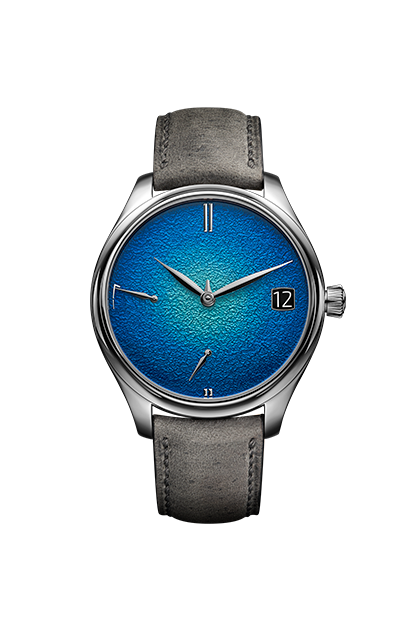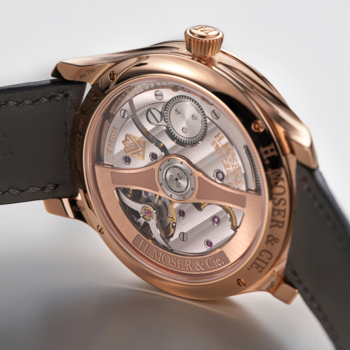In the field of horology there’s a special corner reserved for the purists, the aficionados, and the connoisseurs. This corner celebrates the romance and rich heritage of manual movements, the intricate mechanisms that have been the heartbeat of timepieces for centuries. Ever since its founding in 1828, H. Moser & Cie. has both embraced and elevated this legacy, designing and creating timepieces with manual movements that are both engineering wonders and works of art.
What is a manual movement?
A manual movement is a mechanical mechanism that requires the wearer’s intervention. Unlike automatic movements, which harness the energy from the wearer’s wrist movements, manual watches need periodic winding. This winding tightens the mainspring, and as it unwinds, it releases the energy that powers the watch’s functions. It’s an intricate ballet of tiny components working in precise harmony.
Hands on
Despite the modern convenience of automatics, manual movements have retained their allure. But why the enduring appeal? How does the manual watch still manage to captivate collectors and enthusiasts in the digital age? The answer lies in its very essence. Manual watches are intimate, personal, and tactile. The beauty of a manual movement lies in its direct connection between the wearer and the watch; every winding is a ritual, a tactile reminder of the intricate mechanics at play beneath the dial.
Integrating history
For nearly two centuries H. Moser & Cie. has been at the forefront of innovation in luxury timepieces, blending traditional craftsmanship with avant-garde design, and our commitment to the rich tradition of Swiss watchmaking is evident in their stunning manual movement timepieces.
One of the standout features of H. Moser & Cie. is its status as an integrated manufacturer. This means that the company oversees every step of the watchmaking process, from the initial design and development to the final assembly. Such a comprehensive approach ensures that each timepiece meets the brand’s exacting standards, ensuring unparalleled quality control in every timepiece. Additionally, by having all our processes in-house, H. Moser & Cie. can experiment, innovate, and refine our designs, leading to exceptional timepieces that push the boundaries of watchmaking.
Manual marvels
The Streamliner Perpetual Calendar comes with our award-winning manual-winding Perpetual Calendar movement. Developed and produced in house, the movement features a decluttered dial thanks to the innovative use of a hand to represent the month. Another more lyrical example of a manual Moser is our Endeavour Concept Minute Repeater Tourbillon. A complex interplay of cogs and gongs, its HMC 904 manual-winding movement is composed of more than 400 parts. The watch integrates an intricate complication and mechanism — the minute repeater and tourbillon. The movement, which is visible through a sapphire crystal in the case back, is wound by hand. So you can marvel at the perfect harmony of this watch, not just by looking, but also by listening to the soothing sound of time.
The journey of life
In a world dominated by digital immediacy, there’s something profound about owning and wearing a manual timepiece. They are a bridge to a bygone era, a celebration of craftsmanship, and a daily ritual that connects us to the passage of time. H. Moser & Cie. understand this connection deeply, crafting watches that are not just instruments of timekeeping, but companions on the journey of life. Our watches are not mere instruments; they are stories, legacies, and celebrations of human endeavour.
Beyond the mechanics, H. Moser & Cie.’s manual movements represent a philosophy, a way of life. They remind us of the value of patience and the joy of anticipation. They encourage mindfulness, a connection to the present, and an appreciation for the intricate dance of time. As we navigate the 21st century, the allure of manual movements remains undiminished, and with brands like H. Moser & Cie. championing the cause, the future of manual movements looks as bright as ever.









